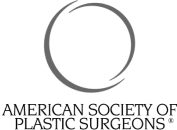
What is a Facelift?
A facelift is a surgical procedure that addresses excess sagging skin in the cheeks, loss of definition in the jawline, and wrinkles, lines, and folds, all of which may occur naturally with the aging process. Genetics and significant weight loss may also lead to a change in the skin’s integrity and firmness. As it only addresses the lower portion of the face, a facelift is often combined with a brow lift or blepharoplasty to rejuvenate the appearance more comprehensively.
There are several options for facelifts in NYC with Dr. Albert who can help determine the best approach for your unique anatomy, goals, and preferences. Dr. Albert performs the following facelift procedures:
- Full facelift – A full facelift can be performed independently or in tandem with facial fat grafting for a more relaxed, inviting appearance. The surgery helps restore balance and harmony along the jawline and in the lower cheeks. Dr. Albert takes special care to avoid an overly tight or “windswept” outcome.
- Deep plane facelift – A deep plane facelift tightens the underlying facial layers, resulting in organic-looking changes. During surgery, the facial tissues are separated from the muscle and fascia layers, which are repositioned to promote youthfulness and natural beauty.
- Mini facelift – A mini facelift may be an ideal solution for patients just beginning to notice the signs of aging. The procedure is designed to address mild facial sagging, depleted contours, and the appearance of wrinkles and lines.


























